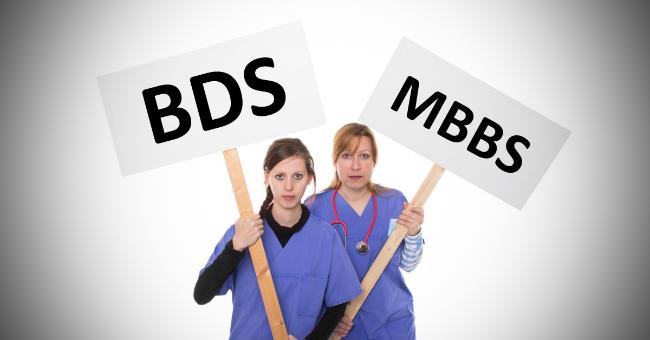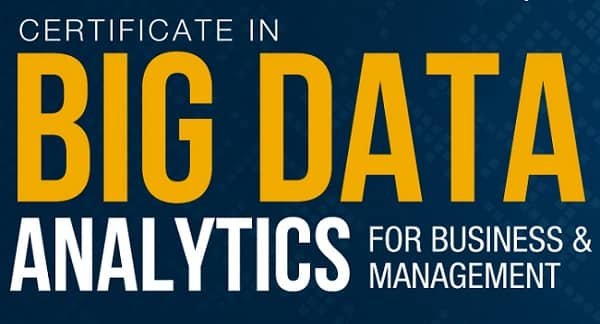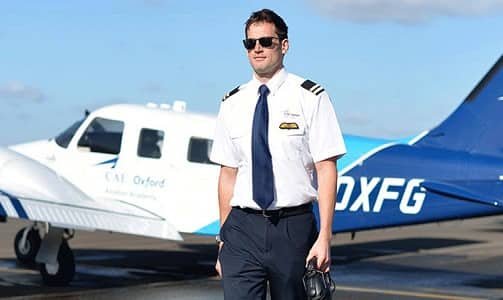Bachelor of Dental Surgery (BDS), (MBBS) Bachelor of Medicine & Bachelor of Surgery are the most sought-after medical science degrees. The candidate must give the National Entrance and Eligibility Test, also known as the NEET Exam, before being considered for admission. Nevertheless, while both courses are at the undergraduate level, there are a few differences between the courses. The primary difference between the two courses is the length of time they are offered and the curriculum they cover.
While the BDS program takes 4.5 years to complete, the MBBS program takes 5.5 years to complete, including the internship program. The general rule is that the (MCI) is in charge of overseeing and regulating the MBBS program, whereas the Indian dental council oversees and regulates the BDS program.
What do you mean by a Bridge Course?
Bridge courses are thought of as complementary knowledge which can be offered to students to convey fundamental information about the study includes that will be told to them shortly.
However, the length of a bridge curriculum can differ from one institution to another. In general, a bridge course could last anywhere from six months to one year.
For instance, if a student’s finish his graduation in Engineering with a specialization in Computer Science and wish to pursue a post-graduate degree in Information Fields of science, a bridge curriculum may be told to him to have the fundamental knowledge of the curriculum that will be educated to him. Thus, the student will not be required to complete the whole undergraduate course in Information Sciences at this time, thereby saving the student’s time, energy, and money.
Bridge Course of BDS To MBBS
The Indian dental council has recently recommended that students take a bridge course from BDS to MBBS. The three-year program has a dual goal, which is to increase the number of women in the workforce. The first goal that is achieved through the bridge course is that this will profit BDS graduates who are seeking full-time career opportunities after completing their degree.
In addition, because it is a novel program, it will offer an opportunity for dental students who graduate from the program to pursue a different career path.
As a result, the program has enormous potential for filling the gap generated by the low penetration of educated staff in medical sciences in India at present.
- General surgery
- General medicine
- Gynecology
- Forensic medicine
- Pediatrics
- Ear, Nose, & Throat
- Psychiatry
- Ophthalmology
- Radiotherapy
- Humanities & community medicine basics
- Biochemistry
- Anesthesiology
Eligibility Criteria of the Bridge Course of BDS to MBBS
The BDS-MBBS Bridge program is designed for students with a dental background who would like to make the transition to the medical field and work as a doctor.
The Indian dental council has not yet finalized the application and admission process. According to the Dental Council of India, a process has been proposed for students enrolled in the BDS program who wish to pursue careers as practitioners or physicians.
In addition, the curriculum is expected to increase professionals in the country, which has the chance to fill a gap in the medical world that currently exists. Both the admission criteria and curriculum are expected to be regulated by the DCI, which will work in conjunction with the Medical Council and Ministry of Health.
- The applicant will be required to take an entrance examination.
- The cumulative scores of candidates in the BDS program will be taken into consideration.
- Admissions could be granted based on the consideration of both of the aforementioned criteria.
Even though the curriculum has not yet been finalized, the prospect of the curriculum following the very same syllabus as well as certain modifications to it will be considered and implemented.
The Indian dental council has proposed particular eligibility criteria for graduates who wish to go for this bridge course, which will be considered during the admissions process. To be considered for admission to this bridge course, applicants must either appear in the entrance exam or have satisfactory results in their BDS degree, or a mixture of both of these criteria may be used to determine eligibility.
Even though there is no formal curriculum, the bridge course may be structured by the MBBS exam and syllabus pattern.
To be considered for this bridge curriculum, the candidate must have received exceptional grades in their undergraduate degree program first. Some of the subjects covered throughout this bridge course include pathology, forensic dentistry, biochemistry, oral medicine, general surgery, anesthesiology, and other related fields. As long as the candidate meets the eligibility requirements, a large number of colleges and universities offer this bridge course.
The Indian dental council recommends this course to provide graduates with more opportunities for employment after they complete their degrees. The duration of this bridge course in India is three years, according to the majority of medical colleges and universities. After having finished this bridge course, graduates will be eligible to receive an MBBS degree & be certified physicians, or they will be able to pursue further advancement in the fields of medicine and surgery.
Aside from providing dental students with job growth, this bridge course also serves another purpose: it allows them to pursue a different career path after graduation. Following receipt of a proposal from the Dental Council of India, the MCI has issued some guidelines for the implementation of a three-year MBBS curriculum to be implemented (DCI). The DCI made significant attempts to ensure this bridge course possible for the benefit of BDS graduates, to provide them with more opportunities for employment after graduation.
The curriculum of Bridge Course of BDS to MBBS
The Health Ministry and the Medical Council of India (MCI) have not yet finalized the BDS MBBS course curriculum, but they have not taken actions based on general rules. It will also be classified that no specializations will be included in the curriculum that will be difficult for a BDS learner to cope with. The same admissions test will have a curriculum that is meaningful to MBBS students but is not incomprehensible to BDS students.
The following advancements have been taken into consideration for this Bridge Program:
- This course will be offered only by public & government universities for the time being, but with modifications in the future, private colleges will also be permitted to offer it.
- The course will last for three years, beginning in the third year of the BDS program.
- The course will follow a syllabus similar to that of the MBBS program but will differ in difficulty levels due to the change in focus.
Job opportunities
As the primary goal of this bridge curriculum is to place BDS graduates in full-time employment, it is critical to discuss the various employment opportunities available to them during the course. Graduate students of this bridge course can pursue a variety of career paths, with the general physician being just one of them.
Upon graduation, general physicians can find employment in a variety of settings including major hospitals, clinics, and other healthcare organizations throughout India. Doctors with high levels of competence are in high demand, which is what the bridge curriculum is designed to meet.
Because of the growing demand for health specialists, degree holders of this course will have an abundance of job opportunities in the future. When it comes to government jobs, some significant efforts are being made to provide services in rural areas, where the availability of subsidized rental housing and the rural setting will encourage more doctors to relocate there.
Significance
The country is not experiencing a doctor shortage, but rather a shortfall of competent doctors. Following the completion of the bridge course, the percentage of talented and qualified doctors will increase dramatically, increasing job opportunities. By allowing dentists to follow MBBS degrees, the government & DCI are attempting to create a win scenario for everyone involved.
During this course, there is a strong emphasis placed on providing students with specialized training; otherwise, there is little point in participating in this bridge course. Even though some health practitioners are opposed to the three-year rural healthcare program, the government, as well as DCI, is expected to make some changes. Nonetheless, the initiative of the bridge course is bound to enhance a variety of aspects of the entire healthcare sector, including patient safety.
Conclusion
The bridge course from BDS to MBBS is an excellent program for increasing the number of opportunities for dental students to obtain full-time employment. Medical students have a difficult time understanding the notions of medical science during their medical studies because the ideas of science and medicine are complex. It is through this bridge course that candidates can gain a comprehensive understanding of medical subjects necessary to obtain the qualification to practice medicine as a medical doctor.

Rahul Kumar is a passionate educator, writer, and subject matter expert in the field of education and professional development. As an author on CoursesXpert, Rahul Kumar’s articles cover a wide range of topics, from various courses, educational and career guidance.




